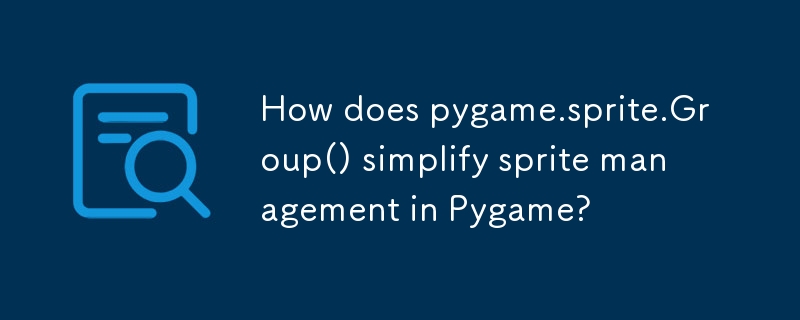

Exploring pygame.sprite.Group()
In the context of Pygame, sprite manipulation plays a crucial role in managing and rendering graphics. The pygame.sprite.Group() class holds a collection of sprites, providing essential functionality for efficient sprite handling and rendering.
Purpose of pygame.sprite.Group()
pygame.sprite.Group() offers a convenient way to organize and manage sprites in your Pygame application. It provides two primary methods:
Sprite Handling and Management
By creating instances of pygame.sprite.Sprite and adding them to a group, you can automatically benefit from the update() and draw() methods provided by pygame.sprite.Group.
Example:
Consider the following code snippet:
import pygame
pygame.init()
player = pygame.sprite.Sprite() # create a Sprite instance
all_sprites = pygame.sprite.Group() # create a Group to hold the player Sprite
all_sprites.add(player) # add the player Sprite to the Group
# Game loop that updates and draws the sprites
while True:
# update the player sprite
player.update()
# draw the sprites
all_sprites.draw(window)
# continue the game loopIn this example, the player sprite is added to the all_sprites group. During the game loop, the all_sprites group automatically updates and draws the player sprite.
Summary
pygame.sprite.Group() offers a convenient and efficient mechanism for managing sprite collections in Pygame. By grouping sprites and utilizing the update() and draw() methods provided by the group, you can effectively handle and render sprites in your game.
The above is the detailed content of How does pygame.sprite.Group() simplify sprite management in Pygame?. For more information, please follow other related articles on the PHP Chinese website!
 How to make charts and data analysis charts in PPT
How to make charts and data analysis charts in PPT
 Android voice playback function implementation method
Android voice playback function implementation method
 AC contactor use
AC contactor use
 The difference between vscode and visual studio
The difference between vscode and visual studio
 The difference between Java and Java
The difference between Java and Java
 Introduction to hard disk interface types
Introduction to hard disk interface types
 nagios configuration method
nagios configuration method
 How to delete a folder in linux
How to delete a folder in linux




